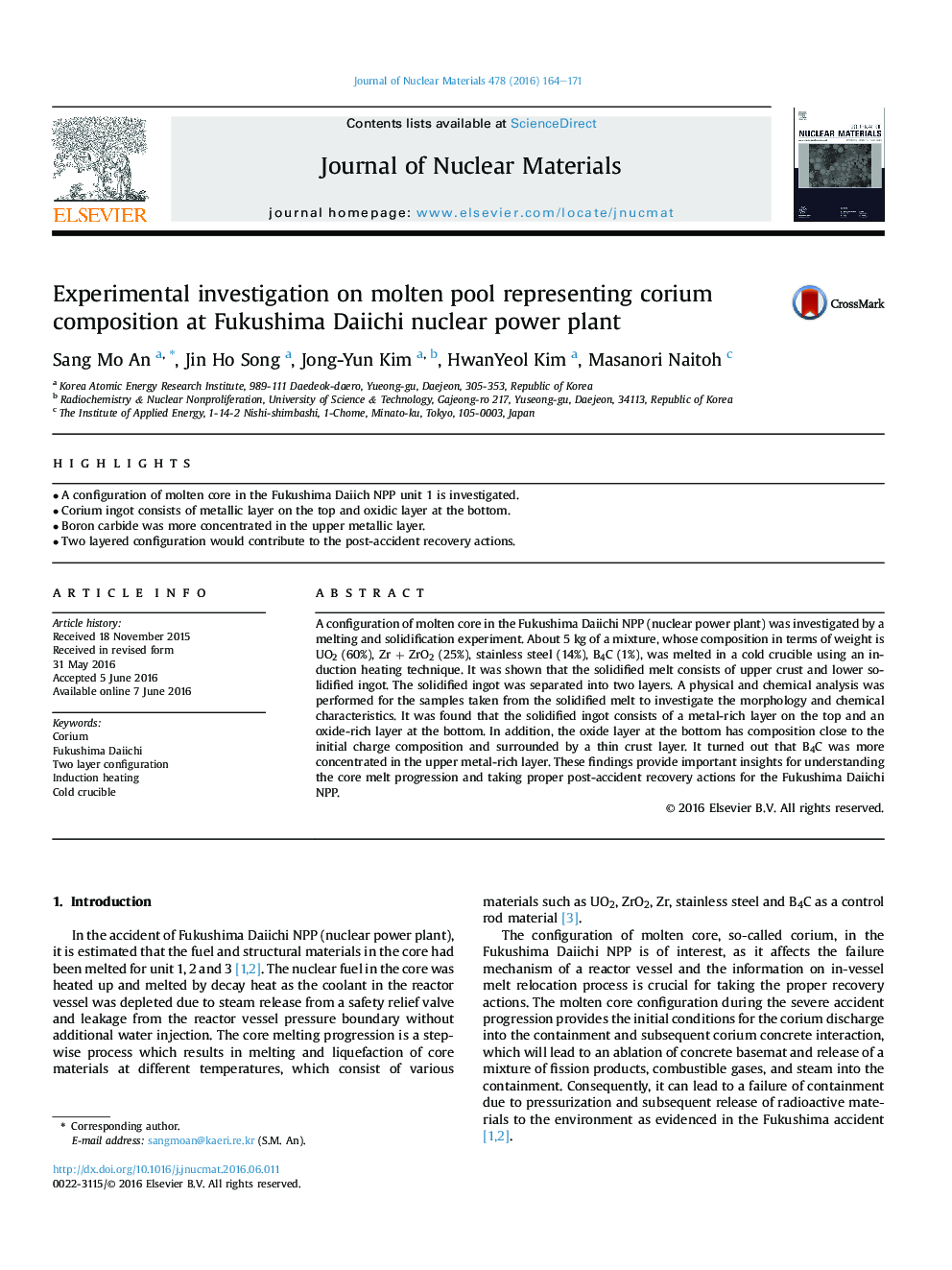| Article ID | Journal | Published Year | Pages | File Type |
|---|---|---|---|---|
| 1564702 | Journal of Nuclear Materials | 2016 | 8 Pages |
Abstract
A configuration of molten core in the Fukushima Daiichi NPP (nuclear power plant) was investigated by a melting and solidification experiment. About 5 kg of a mixture, whose composition in terms of weight is UO2 (60%), Zr + ZrO2 (25%), stainless steel (14%), B4C (1%), was melted in a cold crucible using an induction heating technique. It was shown that the solidified melt consists of upper crust and lower solidified ingot. The solidified ingot was separated into two layers. A physical and chemical analysis was performed for the samples taken from the solidified melt to investigate the morphology and chemical characteristics. It was found that the solidified ingot consists of a metal-rich layer on the top and an oxide-rich layer at the bottom. In addition, the oxide layer at the bottom has composition close to the initial charge composition and surrounded by a thin crust layer. It turned out that B4C was more concentrated in the upper metal-rich layer. These findings provide important insights for understanding the core melt progression and taking proper post-accident recovery actions for the Fukushima Daiichi NPP.
Related Topics
Physical Sciences and Engineering
Energy
Nuclear Energy and Engineering
Authors
Sang Mo An, Jin Ho Song, Jong-Yun Kim, HwanYeol Kim, Masanori Naitoh,
